2',7'-Dichlorofluorescein
Synonym(s):2′,7′-Dichlorofluorescein
- CAS NO.:76-54-0
- Empirical Formula: C20H10Cl2O5
- Molecular Weight: 401.2
- MDL number: MFCD00005047
- EINECS: 200-968-6
- SAFETY DATA SHEET (SDS)
- Update Date: 2025-09-05 20:24:49
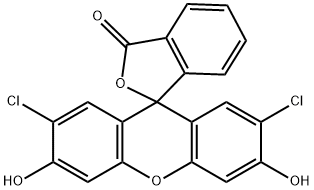
What is 2',7'-Dichlorofluorescein?
Chemical properties
red to yellow solid
The Uses of 2',7'-Dichlorofluorescein
2',7'-Dichlorofluorescein is used as an indicator and as a cellular antioxidant activity. It is also used for the determination of carbohydrates and hydrogen peroxide by fluorescence densitometry and chemiluminescence respectively. It is used as an indicator for argentometry by Fajans method. It is also involved in the cellular antioxidant activity assay. It is utilized as an additive in fluorescence and laser studies.
The Uses of 2',7'-Dichlorofluorescein
Widely used probe, e.g. for determination of carbohydrates by fluorescence densitometry after TLC and determination of H2O2 by chemiluminescence. Fluorescent additives used in indirect fluorimetric detection in OTC-HPLC.
The Uses of 2',7'-Dichlorofluorescein
2',7'-Dichlorofluorescein is used as an indicator and as a cellular antioxidant activity. It is also used for the determination of carbohydrates and hydrogen peroxide by fluorescence densitometry and chemiluminescence respectively. It is used as an indicator for argentometry by Fajans method. It is also involved in the cellular antioxidant activity assay. It is utilized as an additive in fluorescence and laser studies.
A new fluorescent sensor for Cd2+ and its application in living cells imaging. Tetrahedron Lett. 2015, 56 (11), 1322-1327.
Colorimetric and fluorogenic signaling of fluoride ions by thiophosphinated dichlorofluorescein. Dyes Pigm. 2015, 112, 170-175.
What are the applications of Application
2′,7′-Dichlorofluorescein is a dye for fluoresence and laser studies
Definition
2',7'-dichlorofluorescein is a member of 2-benzofurans. It has a role as a fluorochrome. It derives from a fluorescin.
What are the applications of Application
2',7'-dichlorofluorescein has been used as an oxidation-sensitive fluorescent probe to measure ROS (reactive oxygen species) formation in cells.
Biological Activity
2',7'-dichlorofluorescein is an oxidation-sensitive fluorescent probe. 2′7′-dichlorofluorescein diacetate is oxidized to 2′7′-dichlorofluorescein in the presence of ROS (reactive oxygen species).
Biochem/physiol Actions
2′,7′-Dichlorofluorescein is an oxidation-sensitive fluorescent probe. 2′7′-dichlorofluorescein diacetate is oxidized to 2′7′-dichlorofluorescein in the presence of ROS (reactive oxygen species).
References
[1] Chander Hans. “2’,7’-Dichlorofluorescein (DCF) or 2’,7’-dichlorodihydrofluorescein diacetate (DCFH2-DA) to measure reactive oxygen species in erythrocytes.” Biomedicine & Pharmacotherapy (2021): 111512.
Properties of 2',7'-Dichlorofluorescein
| Melting point: | 280 °C (dec.)(lit.) |
| Boiling point: | 514.77°C (rough estimate) |
| Density | 0.79 g/mL at 20 °C |
| refractive index | 1.5300 (estimate) |
| Flash point: | 12°C (53.6°F) |
| storage temp. | room temp |
| solubility | alcohol: passes test |
| form | crystalline |
| pka | 4.46(at 25℃) |
| color | orange to red-brown, powder |
| PH Range | 4.0 (colorless) - 6.6 (green) |
| Water Solubility | Soluble in ethanol and methanol. Slightly dimethyl sulfoxide. Insoluble in water. |
| λmax | 509nm |
| BRN | 58009 |
| Stability: | Stable. Incompatible with strong oxidizing agents. |
| Major Application | Electroluminescent devices, sol-gel silica films, integrated circuits, photoresists, lithographic
printing plates, recording material, LED devices, photoconductors, Solid-state dye laser, lithographic printing plates, inks, Fluorescent pH sensors, emissive probes, chemotherapeutic treatment of disease, phototherapeutic treatment of disease, photodynamic treatment of disease |
| CAS DataBase Reference | 76-54-0(CAS DataBase Reference) |
| EPA Substance Registry System | Spiro[isobenzofuran-1(3H),9'-[9H]xanthen]-3-one, 2',7'-dichloro-3',6'-dihydroxy- (76-54-0) |
Safety information for 2',7'-Dichlorofluorescein
| Signal word | Warning |
| Pictogram(s) |
 Exclamation Mark Irritant GHS07 |
| GHS Hazard Statements |
H315:Skin corrosion/irritation H319:Serious eye damage/eye irritation |
| Precautionary Statement Codes |
P264:Wash hands thoroughly after handling. P264:Wash skin thouroughly after handling. P280:Wear protective gloves/protective clothing/eye protection/face protection. P305+P351+P338:IF IN EYES: Rinse cautiously with water for several minutes. Remove contact lenses, if present and easy to do. Continuerinsing. P337+P313:IF eye irritation persists: Get medical advice/attention. |
Computed Descriptors for 2',7'-Dichlorofluorescein
| InChIKey | NZVMJBGGAQSNLI-UHFFFAOYSA-N |
2',7'-Dichlorofluorescein manufacturer
New Products
4,4-Difluoropiperidine hydrochloride tert-butyl 9-methoxy-3-azaspiro[5.5]undecane-3-carboxylate Indole Methyl Resin N-Isopropylurea N,N-Dicyclohexylcarbodiimide(DCC) MELDRUMS ACID 5-METHYLISOXAZOLE-4-CARBOXYLIC ACID Magnessium Bis glycinate Zinc ascorbate 1-bromo-2-butyne 2-acetamidophenol 9(10H)-anthracenone Erythrosin B, 4-Piperidinopiperidine 2-((4-morpholinophenylamino) (methylthio) methylene) malononitrile 2,4-dihydroxybenzaldehyde 3-(4-morpholinophenylamino)-5-amino-1H-pyrazole-4-carbonitrile Methyl 2-methylquinoline-6-carboxylate 2,6-dichloro-4-nitropyridine 4-Bromo-2-chlorobenzonitrile 2-(benzylamino)acetic acid hydrochloride 4-(tert-Butoxycarbonylamino)but- 2-ynoic acid 3,4-dihydro-2H-benzo[b][1,4]dioxepine 1-Phenyl-1-cycloprppanecarboxylicacidRelated products of tetrahydrofuran
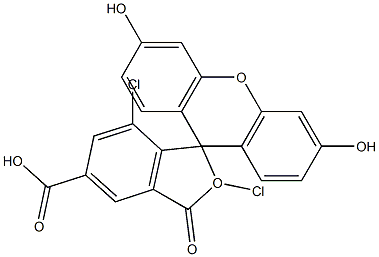



![4'.5'-DICHLOROFLUORESCEIN 1G [R]](https://img.chemicalbook.in/)
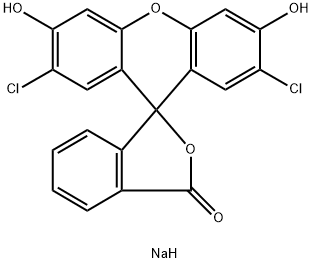
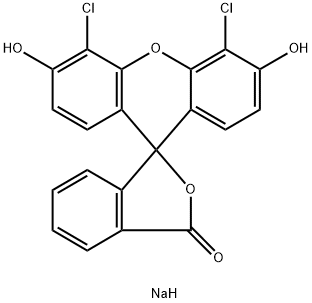
![4',5'-BIS[BIS(2-PYRIDYLMETHYL)AMINOMETHYL]-2',7'-DICHLOROFLUORESCEIN](https://img.chemicalbook.in/CAS/GIF/288574-78-7.gif)
You may like
-
 76-54-0 99%View Details
76-54-0 99%View Details
76-54-0 -
 2,7-Dichlorofluoresceine CAS 76-54-0View Details
2,7-Dichlorofluoresceine CAS 76-54-0View Details
76-54-0 -
 2,7-Dichlorofluoresceine, ACS reagent CAS 76-54-0View Details
2,7-Dichlorofluoresceine, ACS reagent CAS 76-54-0View Details
76-54-0 -
![2',7'-Dichlorofluorescein [for Fluorescent indicator] CAS 76-54-0](https://img.chemicalbook.in//Content/image/CP5.jpg) 2',7'-Dichlorofluorescein [for Fluorescent indicator] CAS 76-54-0View Details
2',7'-Dichlorofluorescein [for Fluorescent indicator] CAS 76-54-0View Details
76-54-0 -
 2′,7′-Dichlorofluorescein CAS 76-54-0View Details
2′,7′-Dichlorofluorescein CAS 76-54-0View Details
76-54-0 -
 2,7-DICHLORO FLUORESCEIN AR/ACS CAS 76-54-0View Details
2,7-DICHLORO FLUORESCEIN AR/ACS CAS 76-54-0View Details
76-54-0 -
 2,7 - Dichloro Fluorescein A.R. (Fluorescence Indicator) ChemicalView Details
2,7 - Dichloro Fluorescein A.R. (Fluorescence Indicator) ChemicalView Details
76-54-0 -
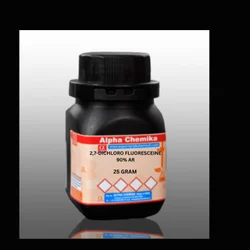 Powder 2,7-Dichloro Fluoresceine 90% Ar, For Laboratory, Cas Number: 76-54-0View Details
Powder 2,7-Dichloro Fluoresceine 90% Ar, For Laboratory, Cas Number: 76-54-0View Details
76-54-0
